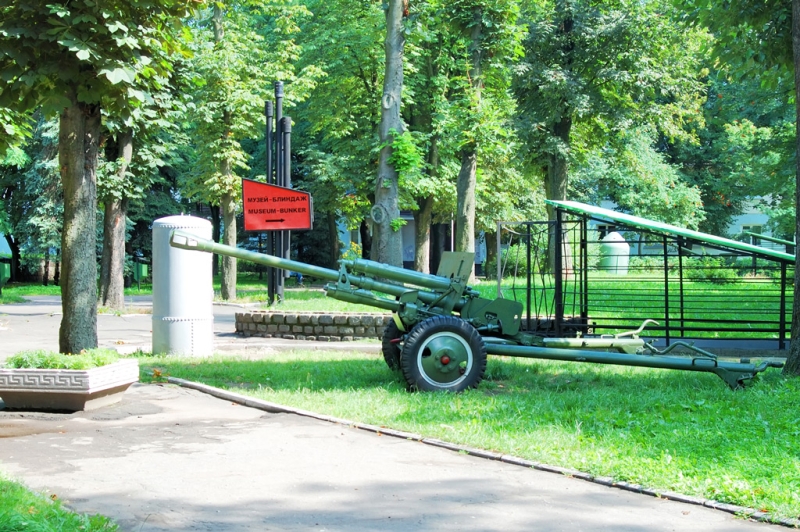
Kaliningrad is the westernmost city in our country. It does not have common borders with Russia; it is surrounded by other states: Poland and Lithuania. Until 1946, the city was called Königsberg, which translates from German as “royal mountain.” A little over 500,000 people live in Kaliningrad. Surprisingly, it was in this city of our country that a baby was recently born who became the seven billionth inhabitant of the planet.
The distance between Kaliningrad and Moscow is approximately 1260 kilometers. The easiest way to get to this city is by plane. The flight will take about two hours. A Schengen visa and international passport are not required for such a trip. In order to get to Kaliningrad by train, you will have to travel 20 hours, crossing the border of Belarus and Lithuania. In this case, you must have with you a foreign passport and a special Simplified Railway Travel Document (STR). Ticket prices start from 1500 rubles.

You should start your sightseeing in Kaliningrad from the Brandenburg Gate (on the map). This is the only one of the seven surviving gates of the city that still performs its transport function. Every detail of this structure, from the pointed tops, decorative flowers to medallions and coats of arms, emphasizes its neo-Gothic style.

The Sackheim Gate is also worthy of tourist attention. They were built in the 17th century and were part of the city’s defense system (on the map). Gradually, the structure lost its defensive purpose and turned into a kind of triumphal arch located at the entrance. After the Great Patriotic War, the gates were abandoned, and in Soviet times they were used as a warehouse and sports ground.
In 2013, the Sackheim Gate was restored, and currently it represents an entire art platform where various art exhibitions, creative master classes, lectures, film screenings and other events are held. The Sackheim Gate is open to visitors from Monday to Thursday. The fee for visiting is designated as a “voluntary contribution”.

The history of the Kaliningrad Zoo dates back to 1896 (on the map). At the entrance, visitors are greeted by a relict tree – ginkgo. This type of plant, according to specialist scientists, is more than 250 million years old.
The most popular residents of the zoo are the Nile crocodile, hippopotamus, brown bear, lions and elephants. The zoo is open both summer and winter. Visitors can book an individual tour, the cost of which is 300 rubles.

Military history buffs should definitely visit the Dugout Museum (on the map). The museum building is a real bomb shelter. In two halls, the furnishings of the German headquarters offices at the time of Germany’s surrender were recreated with great accuracy. Here you can also see dioramas reflecting the events of the Second World War. The “Dugout” also displays an exhibition of the results of search operations that were aimed at finding the burial places of dead Soviet soldiers. The museum is open every day except Mondays, the entrance ticket price for adults is 150 rubles, for children and schoolchildren – from 50 to 80 rubles.

The Museum of the World Ocean (on the map) deserves special attention. This is the first comprehensive marine museum in Russia. Its fund includes more than 80 thousand exhibits. Among them are unique photographs, drawings, nautical charts, archaeological objects and real examples of technology. In addition to permanent exhibitions, the Museum of the World Ocean regularly holds various thematic exhibitions, which are announced on its website world-ocean.ru
While visiting the museum, you should definitely board the Vityaz ship. Now this research vessel is permanently moored at the museum pier, but previously it served the USSR Academy of Sciences for a long time. He has 65 expeditions and more than 800 thousand nautical miles. Such outstanding researchers as Thor Heyerdahl and Jacques-Yves Cousteau boarded the Vityaz.

One of the most unusual attractions in Kaliningrad is the upside-down house (on the map),
which is located in the Yunost Culture and Leisure Park. Its foundation looks into the sky, and the building itself stands on a gable roof. Everything in the house is also turned upside down.

You can get in touch with the history and culture of Ancient Rus’ at the Museum of Russian Superstitions (on the map). Here is a unique collection of exhibits dedicated to folklore: Leshy, Baba Yaga, Kikimoras, heroes of folk tales, Slavic “spirits” and many other characters. The museum is open daily except Monday and Friday.

In the center of the famous Kaliningrad “Fishing Village” there is the Mayak tower (on the map). Its height reaches 33 meters. To get to the panoramic observation deck, you need to climb 133 steps. The tower houses a small museum containing a collection of 16th-century weapons. Visitors will see two-handed swords from China and Korea, fencing swords, tridents, as well as household items and some old clothing. On the observation deck there is a small sculpture in the form of a seagull hatching an egg. According to popular belief, if you rub this egg and make a wish, it will definitely come true.

The three-story brick Don Tower, built in the mid-19th century, houses the only Amber Museum in Russia (on the map). There are 6 permanent exhibitions here, which are housed in 28 halls. They talk about the basic properties of amber, its origin and processing methods. The main treasure of the museum is a huge nugget that weighs a little more than four kilograms.
The museum is open on weekdays, except Mondays, and weekends. Entrance ticket for adults costs 170 rubles, and for schoolchildren – 80 rubles.

In memory of their trip to Kaliningrad, tourists often buy amber products. They are sold here literally at every turn. You can find beautiful jewelry, interior items inlaid with amber, and even entire paintings. Particularly popular among travelers are amber stones containing inclusions – the remains of ancient insects and plants. They are more expensive than ordinary amber, but they allow tourists to preserve a piece of distant history at home.

